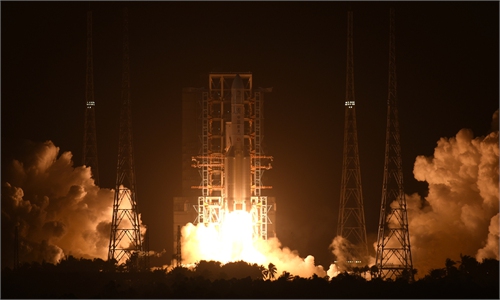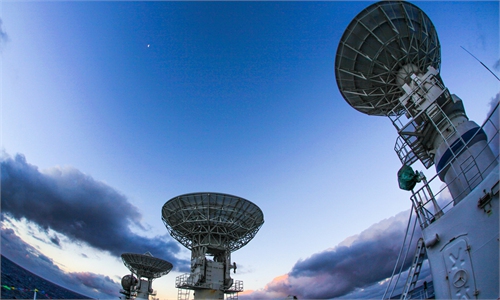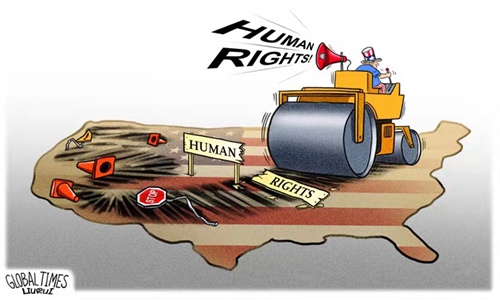The dreadful year is coming to an end with optimism and hope in the air as we greet 2021.

Royal approval: UAE’s Crown Prince of Dubai Sheikh Mohammed bin Rashid Al-Maktoum receiving an injection of a Covid-19 vaccine. — AFP
COVID-19 Worldwide Dashboard - WHO Live World Statistics
THERE’S finally light at the end of the tunnel from a dark period in modern history. The race to complete the final stage of testing the Covid-19 vaccine is almost at the finish line.
In Britain, the vaccination exercise has kicked off with people above 80 years old, since they’re the most vulnerable to the dreadful virus.
But let’s not get carried away. Only the British government has expedited the approval because it’s bracing for a huge spike with the coming winter.
The United States government only officially approved the use of Pfizer Inc’s Covid-19 vaccine on Friday, with the Food and Drug Administration (FDA) granting an emergency use authorisation for healthcare workers and elderly people in long-term care facilities in its first round of 2.9 million doses.
The FDA is responsible for protecting public health by ensuring safety, efficacy and security of human and veterinary drugs in the US. The FDA has always been used as a benchmark by most countries in providing approvals.
Last week, MyEG Services Bhd announced that it will work with Anhui Zhifei Longcom Biopharmaceutical Co Ltd (Zhifei) to obtain the Malaysian halal certification for the Chinese biopharma company’s Covid-19 vaccine, and to exclusively distribute it in Malaysia for a three-year period.
It said the two companies had signed a memorandum of understanding to cooperate in conducting Phase 3 clinical trials of Zhifei’s vaccine in Malaysia and to meet the halal status requirements of the Department of Islamic Development Malaysia (Jakim).
In September, loss-making Ho Wah Genting, which had been searching for a core-income generating business for a while, declared it was officially in the race to produce vaccines.
It announced that it had been appointed by a China-based diagnostic reagents manufacturer as its designated overseas sales agent for Covid-19 diagnostic products in Asean countries.
More recently, a Covid-19 research centre not linked to any medical institution, also sprouted and began issuing press releases to the media.
Firstly, let’s be clear that there’s nothing to stop the private sector from playing a role in the search for a vaccine source. In fact, I think it’s commendable that these companies are ready to play a complementary role.
If the intention is to help their bottom line, and in the process, propel their share prices, it’ll be up to shareholders to be mindful, and perhaps the Securities Commission to keep its eyes open.
Individuals hoping to set up a non-governmental organisation, including for Covid-19, have the right to do so, but their authority and credibility are for the public and media to decide.
The private sector, in fact, should be encouraged to take a stronger role in the fight against the pandemic, as the number of cases continue to climb in Malaysia.
The truth is, while we’ve relaxed the rules, with a crippling economy in mind, our situation has gotten worse. Let’s be honest – statistics don’t lie.
Only those with a warped mind, like conspiracy theorists, think the numbers in Malaysia have been manipulated and jacked up for political reasons. It’s an insult to dedicated professionals like Health Ministry director-general Tan Sri Dr Noor Hisham Abdullah and his team of frontliners, who haven’t taken a day off since the Movement Control Order (MCO) began in March.
The number of positive cases in Malaysia could likely be higher because only targeted areas and cases are tested, including travellers, medical treatment seekers and foreign workers.
The average daily cases (originally three digits in March and rendering us house bound) has passed the 2,000 mark now.
Most of us feel the end is near and that even with the staggering new numbers, we are certain that the cure is just round the corner, what with all the media hype over 90% efficacy by these drug companies.
Unfortunately, none of the vaccines have been approved by the National Pharmaceutical Regulatory Agency of Malaysia yet. Companies bringing in Covid-19 vaccines must also be registered with the NPRA – it doesn’t matter if these vaccines are from the UK, US, China or Russia.
I’ve been reliably informed that until today, no private companies have applied despite their announcements. So, nothing has been approved.
Like the US, Malaysia has also decided to wait until all the vaccines have completed the final stages of trials and are properly approved.
With the situation exceptionally dire there though, the FDA is reported to be ready to approve emergency use of Covid-19 vaccines in the US as more than 285,000 people have died from the virus.
But as with all testing, there will be cases of side effects, including fatalities. Tests are often called off and then resumed, which is normal, but if we are to read the Western media, only US and UK-made vaccines are good enough.
They have put the Chinese and Russian products in bad light by insinuating they are inferior products.
This isn’t just a question involving billions of dollars, but a race for political and diplomatic achievements.
It won’t be surprising if the US FDA refuses to approve the Chinese and Russian products. And if that happens, then those nations would need to turn to the World Health Organisation.
So many of us have been brain-washed into believing that everything from the West is good and most things from China are inferior or not of international standards.
The New York Times reported that researchers are currently testing 57 vaccines in clinical trials on humans, and at least 86 pre-clinical vaccines are under active investigation on animals.
I am told that China has provided its initial consignment of vaccines from state-owned Sinopharm to Malaysia, and that we would be carrying out trials with the Medical Research and Ethics Committee to finalise the stringent criteria.
Shipments of Beijing-based Sinovac’s vaccine, CoronaVac, have arrived in Indonesia in preparation for a mass vaccination campaign, with another 1.8 million doses due by next month.
Sinovac’s edge is that it can be stored in a standard refrigerator at 2-8 degrees Celsius, like Oxford’s AstraZeneca, while Moderna’s vaccine needs to be stored at -20 C and Pfizer’s at -70 C.
That means the Chinese and UK vaccines are more practical for developing countries like Malaysia. Otherwise, we’d have issues storing large amounts of vaccine at extremely low temperatures because special storage facilities will be needed, which seems almost out of the question for rural areas.
Then, there’s the halal issue. The concerns among Muslims about the shots containing substances forbidden by Islam is understandable as the same issue was also brought up by Muslims in Indonesia.
But here are some simple medical rules – the Malaysian government does not register a medicine based on halal or non-halal status. No medicine carries a Jakim sticker that says halal certified.
Malaysia has inked a deal with Pfizer to supply 12.8 million doses of its Covid-19 vaccine for 20% of the population. It has also reportedly entered a pact with Covax Facility, the global Covid-19 vaccine development platform, to cover another 10% of the population.
This is a life and death situation. No one needs to be an Islamic theology expert to know what Islam says about emergency cases relating to starvation or medical treatment. Perlis Mufti Datuk Mohd Asri Zainul Abidin has reportedly said that “even if there is an ingredient which is not permissible, the chemical transformation process will make it clean and halal.”
The Special Muzakarah Committee of the National Council for Malaysian Islamic Affairs met on Dec 3 to discuss whether the vaccine can be administered to Muslims.
Religious Affairs Minister Datuk Seri Zulkifli Mohamed Al-Bakri said the decision would be announced by the King.
Given the grounds to this concern, this is certainly the right course of action, especially in curtailing it from becoming both religious and political issues, or from companies exploiting the matter for commercial reasons by making all sorts of claims.
As someone privileged to have met Zulkifli, who tested positive himself, I can vouch that he is one of the most rational and practical Islamic scholars.
The United Arab Emirates, a Muslim country, has accepted the China-made Sinopharm and Indonesia, the world’s most populous Muslim country, is ready to take the vaccine from China, too. And Saudi Arabia has embraced Pfizer’s vaccine.
The end of Covid-19 is in sight for sure. The fact that Malaysia is already talking of vaccination and testing approaches, means we’re already making practical preparations.
Last week, I spoke to Datuk Zulkarnain Md Eusope, the chief executive officer of Pharmaniaga Bhd, the company tasked with bottling and transporting the Covid-19 vaccine for Malaysia.
The company is already preparing for the distribution of these vaccines and is just waiting for the government’s approval for the big day.
Zulkarnain is an excited man and rattled off details of what and how Pharmaniaga has readied itself to be part of history and saving lives.
For most Malaysians, 2020 has been a horrible year of Covid-19 and squabbling politicians.
What a toxic combination. For sure, we can’t wait to welcome 2021.
Preparations in place for vaccine rollout
Research now in the final stages
From page 15 BEIJING: Research and development of coronavirus vaccines in China are at the final stages, with preparations in place for their mass production, said the head of the country’s Covid19 vaccine development task force.
There are five domestically developed vaccines under a phase-3 clinical trial, the final stage before attaining approval from the authorities, making China a leading country in Covid-19 vaccine development, said Zheng Zhongwei, who is also director of the National Health Commission’s development centre for medical science and technology.
Despite taking a leading role in Covid-19 vaccine research and development, China does not rush to compete in the field, Zheng told Xinhua on Wednesday.
Vaccines should be evaluated by criteria such as safety, effectiveness, accessibility and affordability before they are approved for market availability, he said, adding that China is being prepared for the mass production of vaccines.
Researchers in China have been racing to develop Covid-19 vaccines. A total of 15 vaccines using five different technologies are under clinical trials in China.
Of them, five are undergoing phase-3 clinical trials in countries including the United Arab Emirates, Brazil and Pakistan, as domestic trials involving many volunteers are not practical due to the effective control and prevention of the epidemic on the Chinese mainland.- ANN/THE STAR
Related:
'Criminals may sell fake jabs online'
Fake vaccine vendors prowl dark web for gullible victims
Risky for Europe to bet on US COVID-19 vaccines: Global Times editorial
The method of fighting the epidemic is a scientific issue
and there should not be politics or ideology. Those labels that have
nothing to do with the scientific COVID-19 fight should be discarded.
Source: Global Times | 2020/12/22 22:01:53
China is the world's largest vaccine producer in a market expected to reach $17.75 billion by 2030: industry forum
A forum on vaccine industry marketing was held on Saturday in Zhengzhou, Central China's Henan Province. Organized by the China Association for Vaccines, the forum attracted hundreds of enterprises, analysts, lawyers and scholars, who shared the latest information on the vaccine industry
GT investigates: The mass vaccination countdown
The research and development process for a new vaccine usually takes at least a decade. But the deadly pandemic pushed the world to shorten the process to less than one year, which apparently increases the public's worries over the products' safety and efficacy. Can people accept such a hastily developed vaccine? Continue reading and let the evidence speak for itself.
Sinovac secures annual output of 300 million COVID-19 vaccine doses by end of year
China's leading vaccine maker Sinovac is working around the clock to prepare for mass production, with the first production line to secure 300 million doses of a COVID-19 vaccine annually, the Global Times learned after an exclusive visit to the company's plant in Beijing.
Chinese tech firms adopt blockchain, big data to resist virus
As the overseas pandemic situation remains grave, China faces increasing pressure to prevent imported cases. Particularly, recent reports of frozen pork, lamb, beef, shrimp and fish products testing positive for COVID-19 in over a dozen regions across China have raised widespread concerns over the risks of infection through cold chain trade due to its long supply chain and virus-friendly environment.UK PM announces new stricter restrictions to combat coronavirus surge
weeks and be reviewed on Dec. 30.br br The prime minister said the latest infections in many parts...
The battle for vaccine transportation and distribution begins
With the continuous spread of good news about COVID-19 vaccines, how to ensure its transportation has become a hot topic for the global cargo industry. Analysts believe that vaccine transportation will stimulate the aviation recovery, but questions remain about how to make the transportation safe.


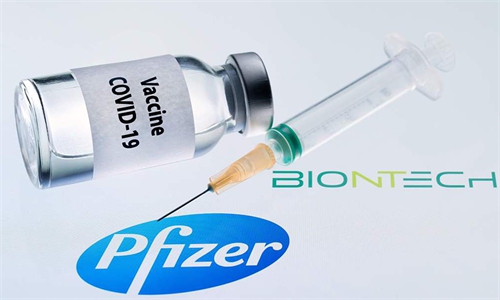
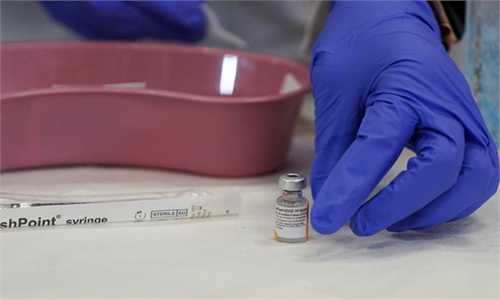
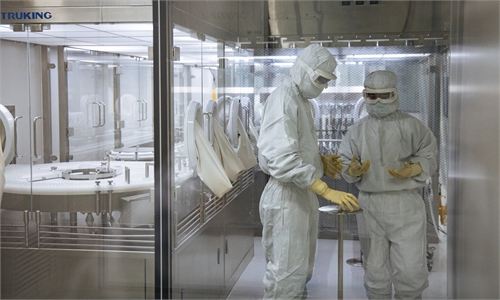
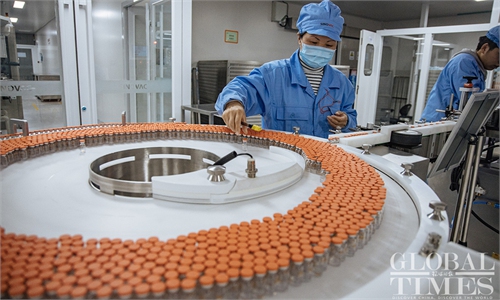
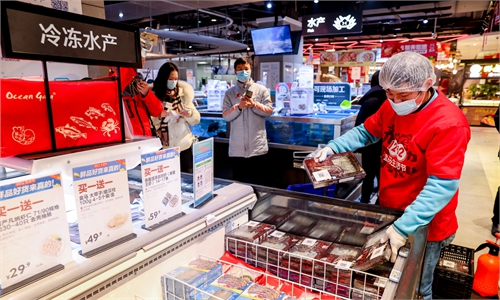
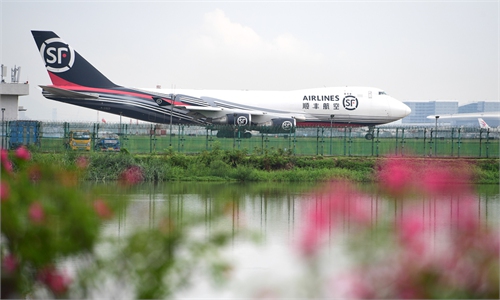


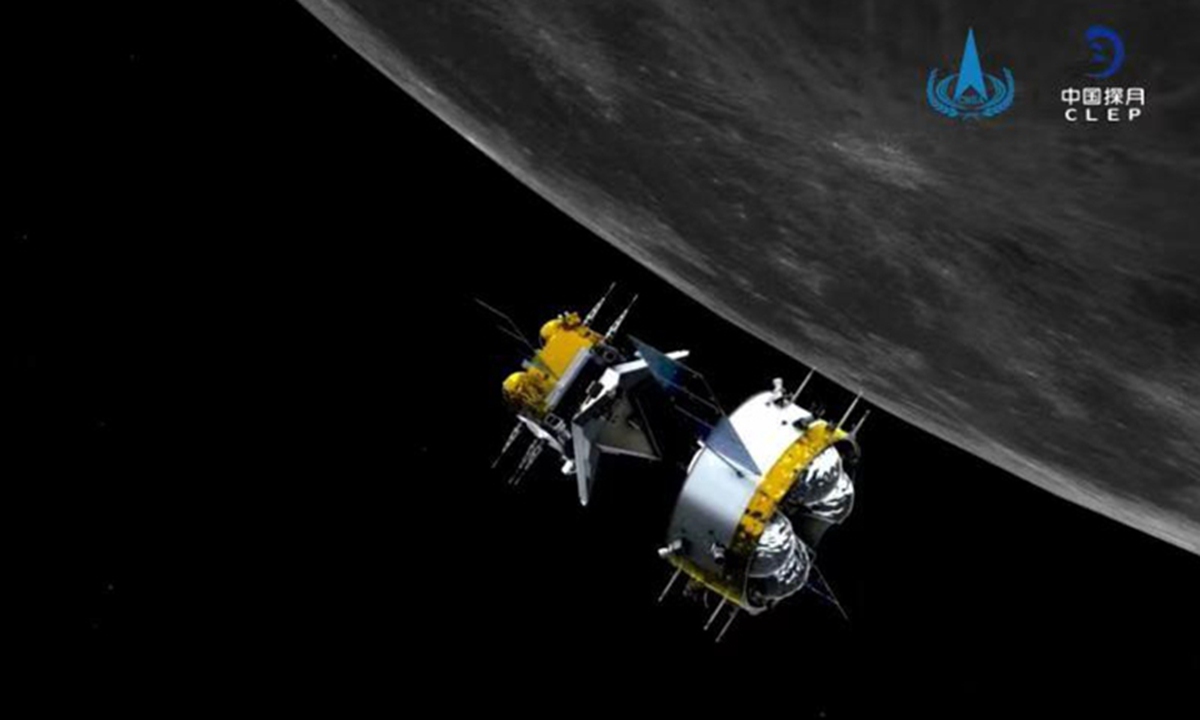 Image released by the China National Space Administration (CNSA) shows
the orbiter-returner combination of China's Chang'e-5 probe approaching
the ascender. Photo: Xinhu
Image released by the China National Space Administration (CNSA) shows
the orbiter-returner combination of China's Chang'e-5 probe approaching
the ascender. Photo: Xinhu